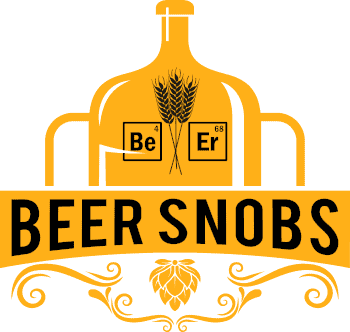If you buy something through a link in our posts, we may get a small share of the sale.
It’s so heartbreaking to have taken your time to prepare beer, waiting for four to six weeks only to realize that your beer is flat. This article details everything you may need to know on how to fix flat beer and how you can avoid a flat beer in the future.
Contents
Fixing Flat Beer
Beer that has not been carbonated fully might be flat or even have off-flavors. Below are different ways you can use to fix your flat beer.
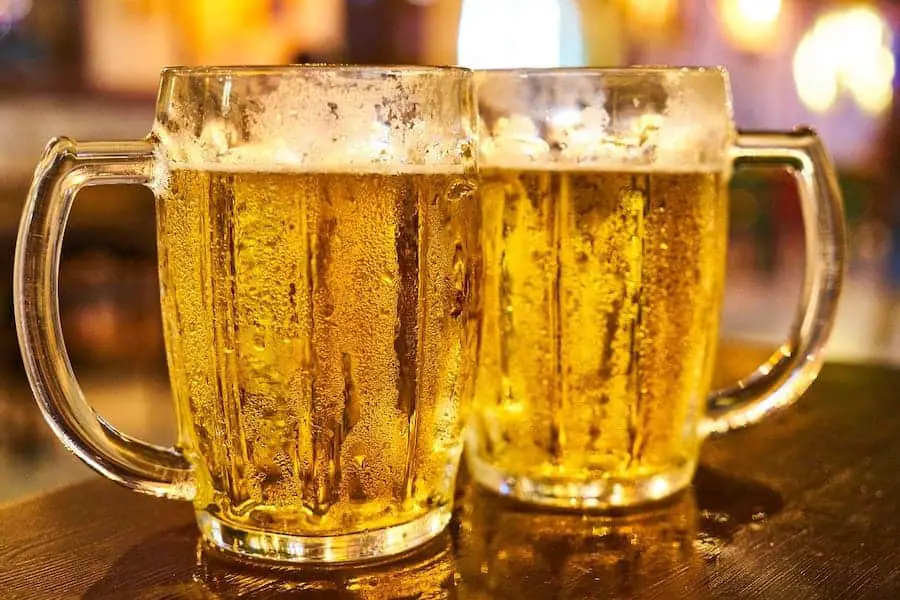
- If after four weeks you realize you didn’t add sufficient sugar and your beer is at risk of being flat, open up every bottle and add a pinch of sugar.
- Be cautious when adding priming because adding too much sugar can cause little bottle bombs which can be quite dangerous.
- Ensure you put the bottles in a safe place in case of an explosion, they won’t hurt anyone.
- Many recipes recommend using corn sugar or the basic white sugar as they ferment quickly and mix well.
- There are other substitutes of corn sugar which include honey, molasses, demerara sugar, dry malt extract, and brown sugar you can use if the first priming sugar didn’t work well.
- Leave your bottles in a warmer environment probably 70 to 75 degrees Fahrenheit as this temperature activates the yeast and allows secondary fermentation to commence.
- If you live in colder climates, consider sticking a piece of thermometer in one of the bottles to monitor the temperature of your beer.
- Maintain optimum fermentation temperature because if you subject the yeast to temperatures that are above room temperatures, they will eventually die and not finish the task ahead.
- Make sure you have sufficient water to properly rinse off the sanitizer you used when cleaning your bottles or bottling bucket.
- If you are using the no-rinse sanitizer, rinse your bottles to avoid killing the yeast.
- Consider sprinkling some yeast in every bottle to help fix the flat beer.
- When bottling, you should boil the priming sugar and then add it to your beer that has fermented.
- You can swirl the beer in the bottling bucket for proper mixing of the priming solution in the beer without aeration.
- You can also pour the priming solution into the fermentation tank and gently stir it if you don’t have a bottling bucket.
Causes of a Flat Beer
Have you batched up your beer as directed but ended up with a flat beer? Below are some reasons why this may happen.
Insufficient Conditioning Time in the Bottle
Homebrew beer that is primed with corn sugar requires two to four weeks of bottle conditioning before it is completely carbonated and ready to drink. This offers sufficient time for fermentation of all priming sugar, production of carbon dioxide, and absorption of carbon dioxide into the beer.
This time also ensures that the overall taste profile of the beer is matured. During bottle conditioning, yeast consumes the priming sugar added and introduces a new taste in the beer. If not given sufficient time, this will not happen and the resulting beer will be flat.
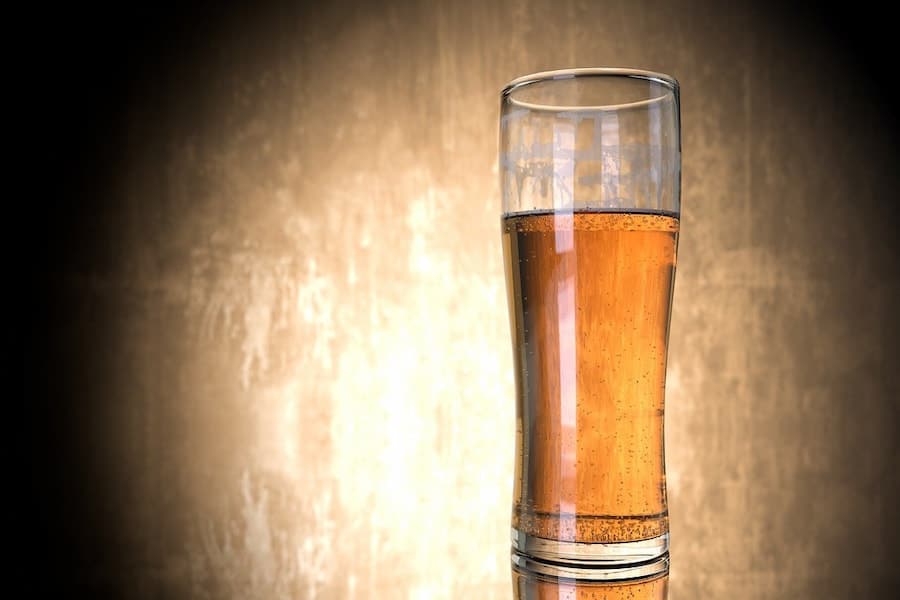
Carbonating at Low Temperatures
The flat taste can also be caused by bottle conditioning in low temperatures. In low temperatures, the yeast becomes inactive and fails to consume the priming sugars in the beer, and therefore no bubbles will be produced for secondary fermentation. In most cases, people living in colder areas experience this issue.
Using the Wrong Kind of Priming Sugar
Some priming sugars such as lactose sugar ferment slowly. If for any reason you used it to prime your beer, most likely it is not going to offer you any carbonation. Similarly, if a complex sugar is used, the yeast takes longer to ferment the complicated sugar molecules which may, in turn, cause a flat taste in your beer.
Using Insufficient Priming Sugar
Even if you brewed your beer as instructed using the recommended fermenting sugar and sufficient time of bottle conditioning, your beer can still taste flat if you use insufficient priming sugar.
It doesn’t matter the amount of time you allow your beer to condition, too little priming sugar leads to little or no carbonation in your beer. If you add too little sugar, fewer bubbles will be produced and there will not be sufficient food for your yeast.
The Priming Sugar Did Not Mix Well
If the priming sugar did not mix well in the beer, it can also result in a flat beer. This happens when you don’t allow the priming sugar to dissolve well in the water.
Poor Bottle Sealing
Failure to seal the bottles correctly causes leaking of your beer which in turn leads to a flat beer due to incomplete carbonation. In most cases, this is caused by using the twist-off bottle instead of the pry-off bottles.
If the airlock is not bubbling, it is a clear indication that there is a poor seal between the bucket and the lid. In this case, fermentation occurs but the carbon dioxide is not escaping through the airlock.
Improper Sanitation
During the primary fermentation, yeast is responsible for converting the sugars into a sweet alcoholic flavor. Therefore, using too much sanitizer when rinsing the bottles can cause the yeast to die or become dormant resulting in a flat beer.
Similarly, using the no-rinse sanitizer on your bottles or the bottling bucket can also cause the yeast to die. If the sanitizer is not allowed to dry off completely before using the bottle, there is still a high risk of yeast dying. Even if not all the yeast dies, the remaining ones might not be able to consume all the sugars in the bottle resulting in a flat beer.
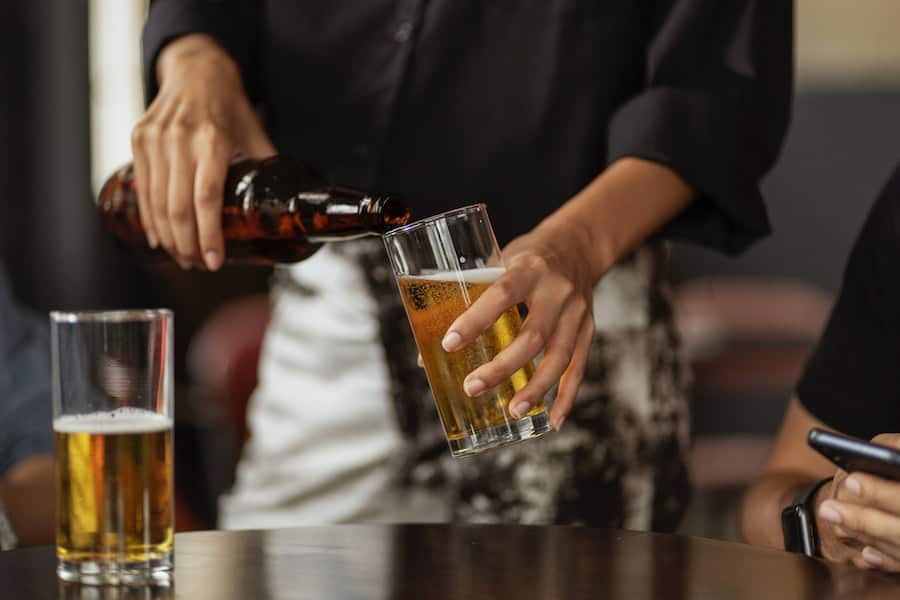
Bad Yeast
Like any other brewing ingredient, yeast comes with an expiry date, and if you fail to note the expiry date, you might end up brewing with expired yeast. If you brew with an expired yeast or one that was not properly stored, no fermentation will take place.
Also, the yeast might be too old and not active enough to consume the priming sugar which can also result in a flat beer. Flat beer can also be caused by sprinkling dry yeast on the surface of your wort.
Normally, dry yeast is dehydrated and not in good condition to work as yeast functions efficiently when it first gets immersed in plain water to get rehydrated.
How Do You Know That Your Beer Is Contaminated?
Many steps have to be followed when preparing beer, but if you are not keen you may end up with a contaminated beer. Below are signs that show that your beer is contaminated:
Beer Tastes Worse Over Time
The good thing with bottle conditioning is that it improves the flavor of your beer with time. If the taste depreciates day by day, you will find yourself drinking your beer quickly instead of dumping it.
The change in taste indicates that your beer was exposed to oxygen during bottling. If it has a skunky smell, it means that it was exposed to direct light.
Slimy Strands In the Beer
If you see a milky layer at the top of your beer or your beer appears more viscous, probably there is a bacterial infection. Beer that has these strands is not fit for human consumption, and you should therefore dump it.
Bad Smell
When alpha acids in the beer are broken down, they join with any available protein in the beer, which in turn forms a new compound. The new compound formed is responsible for the horrendous smell in the beer.
How to Prevent Beer Contamination
Beer contamination can happen to any homebrewer due to some minor mistakes in the brewing process. Here are some tips that can help you prevent beer contamination.
Clean Your Equipment Thoroughly
Make sure you clean your equipment thoroughly. This eliminates the need of scrubbing them during the bottling day. If you choose to clean them later, consider using a brush to scrub off any residue.
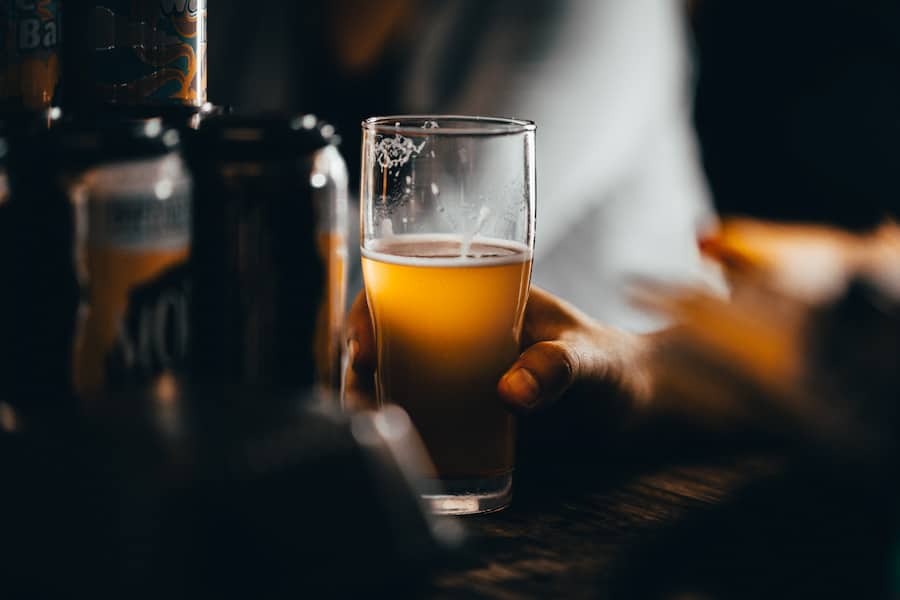
Be Keen With Sanitization
Typically, the priming sugars and wort do not require any sanitization because they are boiled. Anything that gets in touch with your beer from the time you remove it from the boil must be sanitized properly. Additionally, keeping the sanitizer solution in the spray bottle allows you to do the sanitization quickly and with ease during the brewing process.
Avoid Aerating the Hot Wort
The hot wort is prone to aeration particularly when it is cooling. In this case, you should make sure that no hot wort splashes around and that cooling takes place quickly. However, if any oxidation takes place, you will end up with unwanted flavors in your final beer.
Ensure That Your Yeast Is Not Contaminated
Make sure you sanitize the scissors or any cutting object that you will use before cutting open the packet with the dry yeast.
Store Your Beer in a Dark Place as It Ferments
Light destroys and causes a skunky smell in your beer, more particularly if stored in a glass carboy. Additionally, heat and light promote the breakdown of flavor compounds in your beer and cause an increase in carbon dioxide pressure which may, in turn, cause bottle explosion.
Frequently Asked Questions
Can Beer Go Flat in a Glass?
A clear film can be left on glass by fat-based residues such as soap or milk. The film promotes carbonation which in turn makes your beer go flat and even change the taste. Bad smell absorbed from the drying towels can also make your beer have unwanted flavors.
Can Sour Taste in Homebrewed Beer Be Fixed?
Sour taste in beer can be eliminated by extending its time in the fermenter or extra bottle conditioning it.
Final Thoughts
If you feel confident that you did everything right, it’d be advisable to give the beer some more time before concluding it’s flat. However, if you confirm it’s flat or you believe you made mistakes during the brewing process, the above tips on how to fix flat beer will help you.
